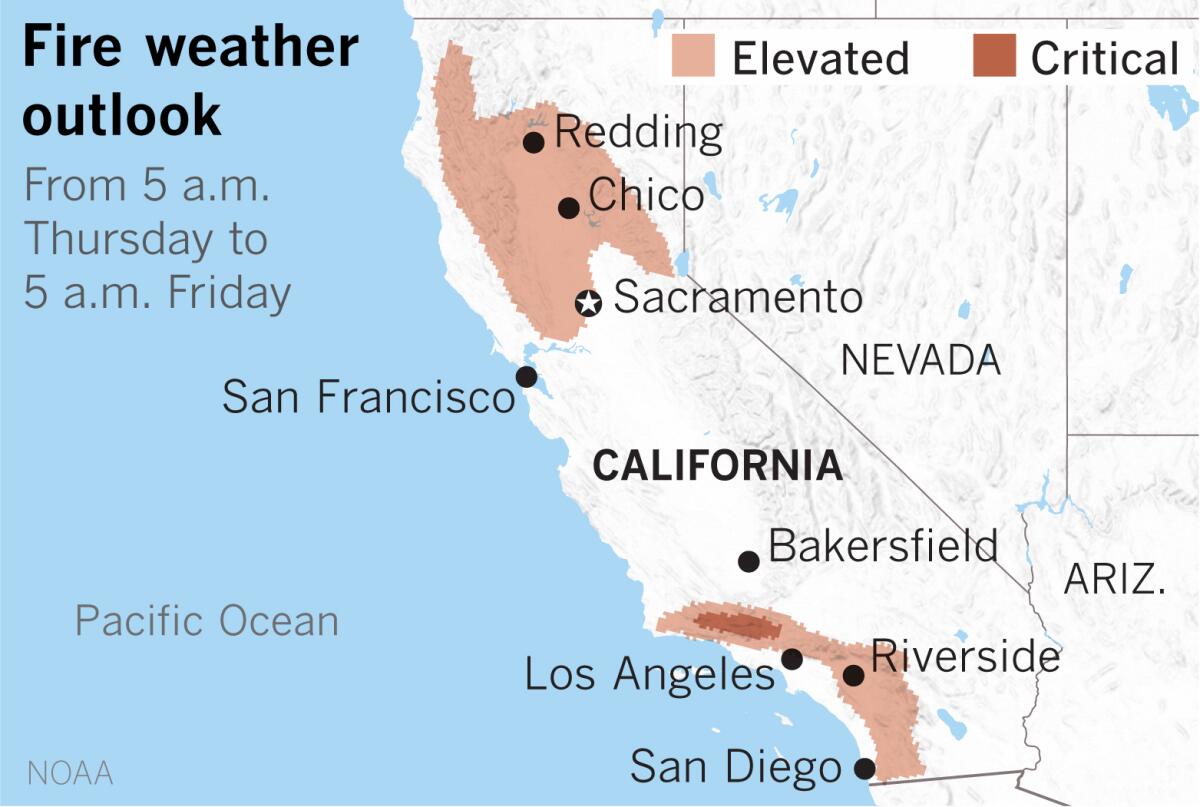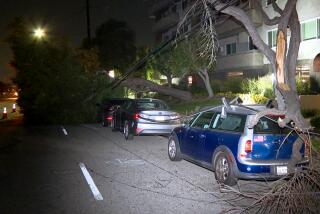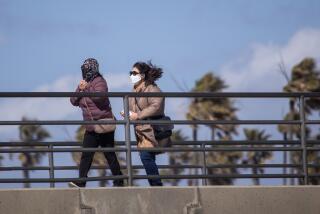Moderate Santa Ana winds likely to bring critical fire weather to parts of the Southland

Santa Ana winds will bring elevated and locally critical fire weather conditions to Southern California on Thursday into Friday, the National Weather Service said.
As a ridge of high pressure aloft continues to bring an extended period of hot, dry weather to the region, surface high pressure building in the Great Basin will boost offshore flow, resulting in moderate Santa Ana winds Thursday night into Friday, particularly in the higher elevations of Santa Barbara, Ventura and Los Angeles counties, as well as in the Santa Clarita Valley.
Winds gusting from 35 to 45 mph with humidity dipping into the single digits would probably result in critical fire weather conditions that could last into Friday afternoon.
Hot, dry conditions will continue in Northern California, with northerly winds through the Sacramento Valley on Thursday. Elevated fire weather conditions may become critical for an hour or two during the late afternoon hours.

Santa Ana winds are northerly to northeasterly winds that can blow any time of the year, but they are especially prevalent in the fall and winter in Southern California. They develop when surface high pressure settles into the arid Great Basin of Nevada and Utah. The winds are caused by a pressure gradient between that high pressure and lower pressure to the south. High pressure always flows toward lower pressure.
By the time the winds arrive in the Los Angeles area, they have descended several thousand feet, shedding moisture along the way and heating up through compressional heating. They have also sped up after being forced through narrow canyons and passes.
Santa Ana winds can cause damage and overturn high-profile vehicles, among other dangers. For the most part, they arrive after Southern California has baked for several rainless months under a pitiless summer sun. By that time, all the vegetation is desiccated and primed for fire. The winds can bring extremely low humidity and high heat, and they can fan any fire that starts into a raging inferno.
Other parts of California have offshore winds that are similar to Santa Anas, and they usually have about the same effect, which is to say they promote fire. One of many dramatic examples was a dry, albeit weak, east wind that fanned flames across what was then a mostly wood-framed city of San Francisco after the Great Earthquake of April 18, 1906.
More to Read
Start your day right
Sign up for Essential California for news, features and recommendations from the L.A. Times and beyond in your inbox six days a week.
You may occasionally receive promotional content from the Los Angeles Times.







